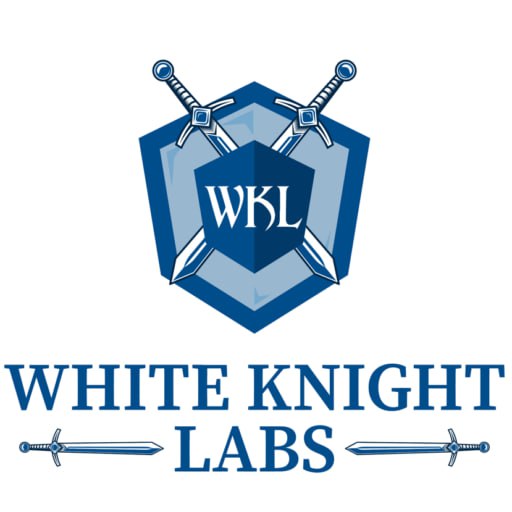If you’re part of a small marketing team, you know the pressure of needing to produce more content faster, better, and on a tight budget. Whether you’re writing blog posts, emails, or social media captions, the demand for fresh content never stops. That’s why more marketers are turning to AI tools to help lighten the load.
But while AI can generate content quickly, it often sounds robotic or off-brand. You could end up spending so much time fixing the AI’s writing that it cancels out the time you saved by using it. That’s where AI-to-human text converters come in. These tools take AI-generated content and make it sound natural, relatable, and ready for your audience. If you’ve ever had to rewrite AI text like a human to make it usable, you know just how valuable this can be.
Let’s walk through how these tools work, why they matter, and how lean marketing teams can use them to scale content creation without sacrificing quality.
Why AI Writing Tools Are So Popular In Marketing
AI content generators like ChatGPT, Jasper, Copy.ai, and others are everywhere now. And for good reason—they can save a lot of time.
Here’s what AI writing tools are great for:
- Generating rough drafts quickly
- Brainstorming content ideas
- Creating outlines or first versions of articles
- Writing repetitive or formulaic content (like product descriptions)
For lean marketing teams, these tools are a game changer. You can get more done with fewer resources. But they aren’t perfect.
The common drawbacks of raw AI content:
- Robotic tone or awkward phrasing
- Lack of emotional connection
- Generic or repetitive language
- Doesn’t always match your brand’s voice
That’s where another layer of tools—or smart editing—becomes essential.
What Are AI-to-Human Text Converters?
AI-to-human text converters are tools (or sometimes techniques) that help transform raw AI-generated content into writing that sounds like it came from a real person. They’re designed to improve tone, readability, and clarity without losing the original message.
These tools, like aitohumantextconverter.net help with things like:
- Making AI content sound more natural and conversational
- Adding human-like word choices and expressions
- Breaking up long or clunky sentences
- Making sure the message feels authentic and relatable
Some platforms include built-in tools for this, while others are standalone apps or browser extensions. Even a skilled editor using AI-assisted writing tools can act as a humanizing layer.
Why Lean Marketing Teams Should Care
If you’re working on a small team with big goals, you don’t always have time to start every piece of content from scratch, or edit AI content line by line.
Using AI to human converters lets you:
1. Scale without sacrificing quality
You can publish more content while still keeping it engaging, brand-friendly, and human.
2. Maintain a consistent brand voice
Instead of sounding like every other AI-generated blog out there, your content will feel true to your brand’s personality.
3. Save time on editing
Rather than rewriting entire AI drafts, you can polish them in a few minutes with the right tool or workflow.
4. Empower junior team members
Even team members with less writing experience can create solid content by starting with AI and refining it with a humanizer tool.
With AI support, teams can also manage the growing demand for content across multiple channels—blogs, emails, social posts, and more. This helps prevent burnout and keeps your brand present and consistent, even when resources are stretched thin.
How to Use These Tools Effectively
Just like any tool, the results depend on how you use them. AI to human converters work best when you feed them strong content and apply a few smart practices.
Best practices to keep in mind:
- Start with a decent AI draft. Garbage in, garbage out. Your AI-generated draft should still have clear ideas and structure.
- Know your brand voice. Define your tone—are you friendly, expert, playful, or formal? Use that as a filter when editing.
- Don’t skip the human pass. These tools help, but a quick review by a real person will catch things that software can’t.
- Use it to enhance, not replace. Let the converter smooth and shape the content, not write it entirely for you.
- Pair with templates and outlines. Use structured formats to guide the content and keep it on message.
Common Mistakes to Avoid
Even great tools can’t fix everything. Here are a few things to watch out for:
1. Over-relying on automation
If every piece of content sounds the same, your audience will tune out. Keep your content varied and thoughtful.
2. Ignoring originality
AI can only remix what’s already out there. Make sure you’re adding something fresh or valuable.
3. Skipping SEO and intent
Just because the content reads well doesn’t mean it’s optimized. Double-check keywords and that you’re answering real user questions.
4. Not tailoring for the platform
A blog post shouldn’t read like a LinkedIn caption or email. Use the right tone and structure for each channel.
5. Forgetting about the audience’s experience
Sometimes, in the rush to produce more content, teams lose sight of the reader’s journey. Always ask: Is this helpful, clear, and enjoyable to read? Tools can assist, but empathy and clarity come from humans.
Conclusion
AI can’t replace human creativity, but it can make the creative process faster and easier. For lean marketing teams, AI-to-human text converters are a powerful way to stretch your resources without cutting corners on quality.
Start small. Experiment with a blog post or email campaign. Find a workflow that balances speed with authenticity. And remember: the goal isn’t just to publish more content—it’s to connect with your audience in a real, human way.
AI won’t replace the creativity and insight of a good marketer—but it can act like a reliable assistant. The key is to strike a balance between automation and authenticity. As AI evolves, the marketers who learn how to guide and refine it will have a major edge.
By using the right tools and keeping your message clear, consistent, and conversational, you can scale your content without burning out your team—or your readers.




